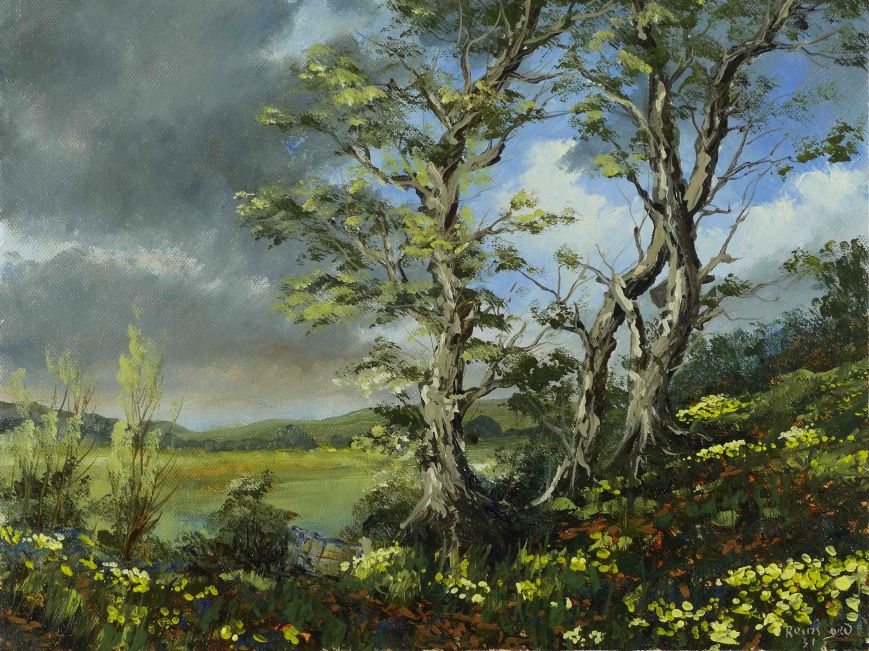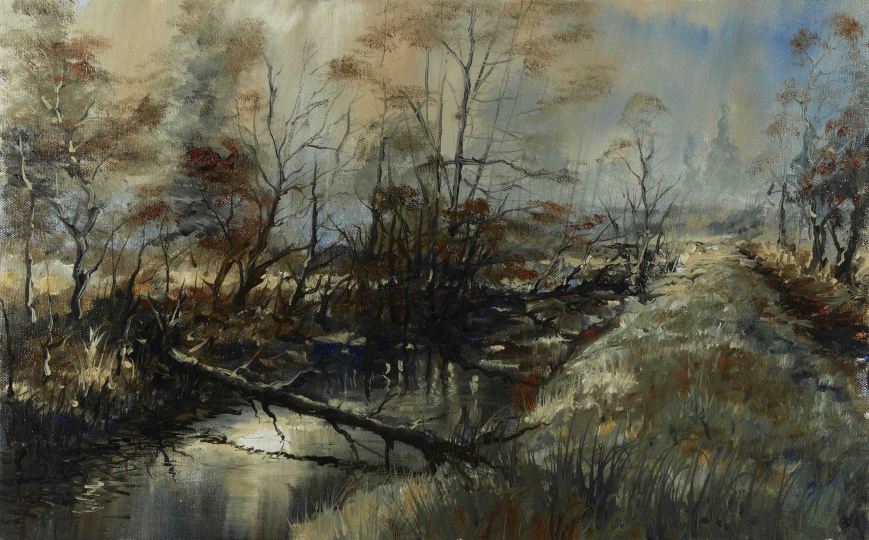After the greys and browns of winter, this blaze of bright yellow is surreal. And yet, despite their vivid colour, they are very much an integrated part of the emerging spring growth. There are good years and bad years for wild daffodils. This year is a good year. Very often an apparently random scattering of daffodils is all that remains of a cottage or farm house obliterated in the agricultural modernisation of the 1960’s.
For the bright yellow of the daffodils I used Winsor Lemon Yellow. This colour is a pure yellow without any hint of red, unlike Cadmium Yellow which I had thought of using. By using a ‘reddish’ background, provided by Burnt Sienna, and hints of blue (Cobalt) produced a contrast to the pure yellow of the Lemon Yellow. As the Lemon was the only yellow used throughout the entire painting the pure form used in the flowers was not disconnected from the general colour scheme. I have the striking yellow of the daffodils within a harmony of spring colour.
The 3 colours used are Winsor Lemon Yellow, Burnt Sienna and Cobalt Blue. The size is 12″ x 9″.
Here’s the video of the painting process, see you soon.



